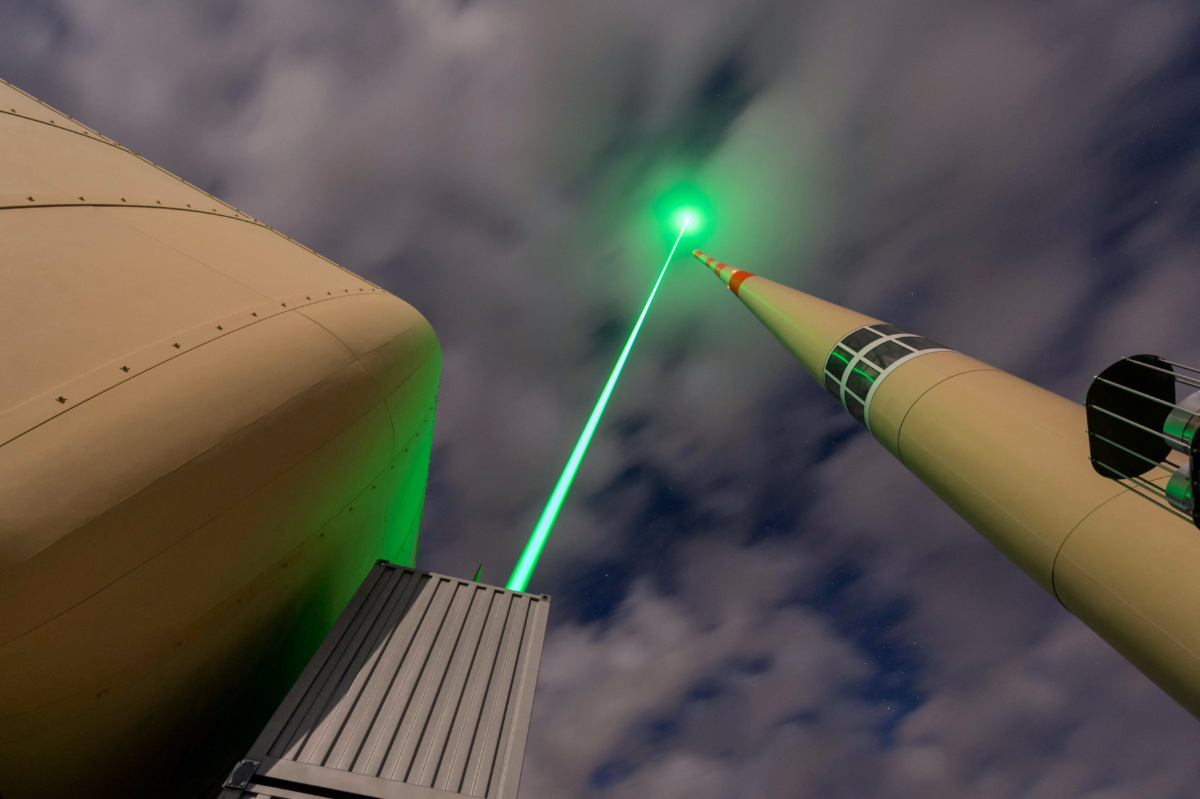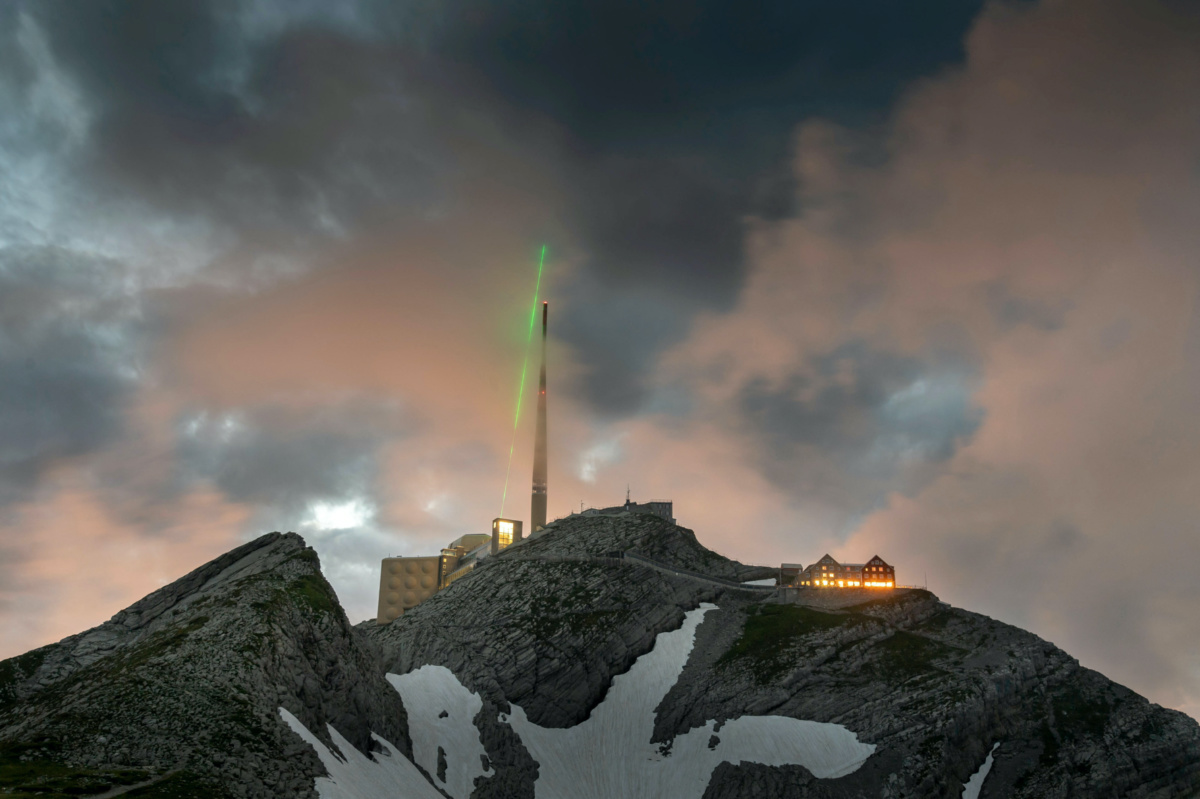Washington DC, US
Reuters
When Benjamin Franklin fashioned the first lightning rod in the 1750s following his famous experiment flying a kite with a key attached during a thunderstorm, the American inventor had no way of knowing this would remain the state of the art for centuries.
Scientists now are moving to improve on that 18th century innovation with 21st century technology – a system employing a high-powered laser that may revolutionize lightning protection. Researchers said on Monday they succeeded in using a laser aimed at the sky from atop Mount Santis in north-eastern Switzerland to divert lightning strikes.

The Laser Lightning Rod, an experimental lighting protection device that diverts the path of lightning bolts using a high-power laser, is seen in action at the top of Mount Santis in Switzerland in this undated photograph. PICTURE: TRUMPF/Martin Stollberg/Handout via Reuters.
With further development, this Laser Lightning Rod could safeguard critical infrastructure including power stations, airports, wind farms and launchpads. Lightning inflicts billions of dollars in damage on buildings, communication systems, power lines and electrical equipment annually while also killing thousands of people.
The equipment was hauled to the mountaintop at an altitude of about 2,500 metres, some parts using a gondola and others by helicopter, and was focused on the sky above a 124-metre-tall transmission tower belonging to telecommunications provider Swisscom, one of Europe’s structures most affected by lightning.
In experiments during two months in 2021, intense laser pulses – 1,000 times per second – were emitted to redirect lightning strikes. All four strikes while the system was active were successfully intercepted. In the first instance, the researchers used two high-speed cameras to record the redirection of the lightning’s path by more than 50 metres. Three others were documented with different data.
“We demonstrate for the first time that a laser can be used to guide natural lightning,” said physicist Aurelien Houard of Ecole Polytechnique’s Laboratory of Applied Optics in France, coordinator of the Laser Lightning Rod project and lead author of the research published in the journal Nature Photonics.
Lightning is a high-voltage electrical discharge between a cloud and the ground, within a cloud or between clouds.
“An intense laser can generate on its path long columns of plasmas in the atmosphere with electrons, ions and hot air molecules,” Houard said, referring to positively charged particles called ions and negatively charged particles called electrons.
“We have shown here that these plasma columns can act as a guide for lightning,” Houard added. “It is important because it is the first step toward a laser-based lightning protection that could virtually reach a height of hundreds of metres or a kilometre with sufficient laser energy.”
The laser device is the size of a large car and weighs more than three tons. It uses lasers from German industrial machine manufacturing company Trumpf Group. With University of Geneva scientists also playing a key role, the experiments were conducted in collaboration with aerospace company ArianeGroup, a European joint venture between Airbus SE and Safran SA.

The Laser Lightning Rod, an experimental lighting protection device that diverts the path of lightning bolts using a high-power laser, is seen in action at the top of Mount Santis in Switzerland in this undated photograph. PICTURE: TRUMPF/Martin Stollberg/Handout via Reuters
This concept, first proposed in the 1970s, has worked in laboratory conditions, but until now not in the field.
Lightning rods, dating back to Franklin’s time, are metal rods atop buildings, connected to the ground with a wire, that conduct electric charges lightning strikes harmlessly into the ground. Their limitations include protecting only a small area.
Houard anticipated that 10 to 15 years more work would be needed before the Laser Lightning Rod can enter common use. One concern is avoiding interference with airplanes in flight. In fact, air traffic in the area was halted when the researchers used the laser.
“Indeed, there is a potential issue using the system with air traffic in the area because the laser could harm the eyes of the pilot if he crosses the laser beam and looks down,” Houard said.






